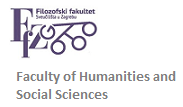Home » 6. semestar
Category Archives: 6. semestar
Phonetics and Phonology
Course title: Phonetics and Phonology Course ID: 235564 Hours: 3L + 1S Instructors: Professor Višnja Josipović Smojver; e-mail: vjosipov@m.ffzg.hr; office hours: Tuesday 15:00-16:30, B-008 Mirta Stamenić, assistant; e-mail: mstameni@m.ffzg.hr; office hours: Wednesday 15:00-16:00 and by appointment, B-008 ECTS credits: 6 Language: English Status: mandatory Semester: 6th (summer) Enrolment requirements: Regular enrolment in the 6th semester. […]
Semantics of the English language (archive)
Course title: Semantics of the English language (until 2022/23) Name of course coordinator: prof. dr. Milena Žic Fuchs Name of lecturer: prof. dr. Milena Žic Fuchs Number of credits: 6 Language of instruction: English Semester: 5 (autumn) Status: obligatory Type of course: 4 periods, lecture Prerequisites: Syntax (both) and Introduction to the Linguistics of the […]
Phonetics and Phonology (archive)
SYLLABUS 2023 Course title: Phonetics and Phonology Course ID: 235564 Hours: 3L + 1S Instructors: Professor Višnja Josipović Smojver e-mail: visnja.josipovic@ffzg.unizg.hr office hours: Tuesday15:00-16:30 – B-008 Mirta Stamenić, assistant e-mail: mstameni@ffzg.unizg.hr office hours: Tuesday 12:30-14:00 – B-008 ECTS credits: 6 Language: English Status: compulsory Semester: 6th (summer) Enrolment requirements: […]
Phonetics and Phonology (2021-22)(archive)
SYLLABUS 2022 Course title: Phonetics and Phonology Instructors: Professor Višnja Josipović Smojver e-mail: visnja.josipovic@ffzg.hr office hours: Monday 15:30-16:30 – B-OO8 Mirta Stamenić, assistant e-mail: mstameni@ffzg.hr office hours: Monday 15:30-16:30 – B-OO8 ECTS credits: 6 Language: English Status: compulsory Semester: 6th (summer) Enrolment requirements: Regular enrolment in the 6th semester. Course description: Students are taught the […]
Phonetics and Phonology (archive, Sept 2021)
Course title: Phonetics and Phonology Instructor: Professor Višnja Josipović Smojver office hours: Monday 15:30-16:30 – B-OO8 e-mail: visnja.josipovic@ffzg.hr ECTS credits: 6 Language: English Status: compulsory Semester: 6th (summer) Enrolment requirements: regular enrolment in the 6th semester. Course description: Students are taught the fundamentals of contemporary phonetics and phonology. The course starts with a survey of […]
Protected: Translation exercises (before 2010)
There is no excerpt because this is a protected post.
Phonetics and Phonology (archive)
Syllabus 2021 Course title: Phonetics and Phonology Instructor: Professor Višnja Josipović Smojver office hours 2020/2021: Monday 15:30-16:30 – B-OO8- by appointment! e-mail: visnja.josipovic@ffzg.hr ECTS credits: 6 Language: English Status: compulsory Semester: 6th (summer) Enrolment requirements: There are no special prerequisites for taking up this course, except that the student has to be regularly enrolled in […]
Translation Exercises
Course title: Translation Exercises Instructors: Tea Raše ECTS credits: 5 Status: mandatory Semester: 6 Exam: continuous assessment Enrolment requirements: CEL3 and Analysis of English Texts Course description: Translation of general-type texts from English into Croatian and from Croatian into English. Through individual translation and analysis of translated texts (their own and other) the students will […]



